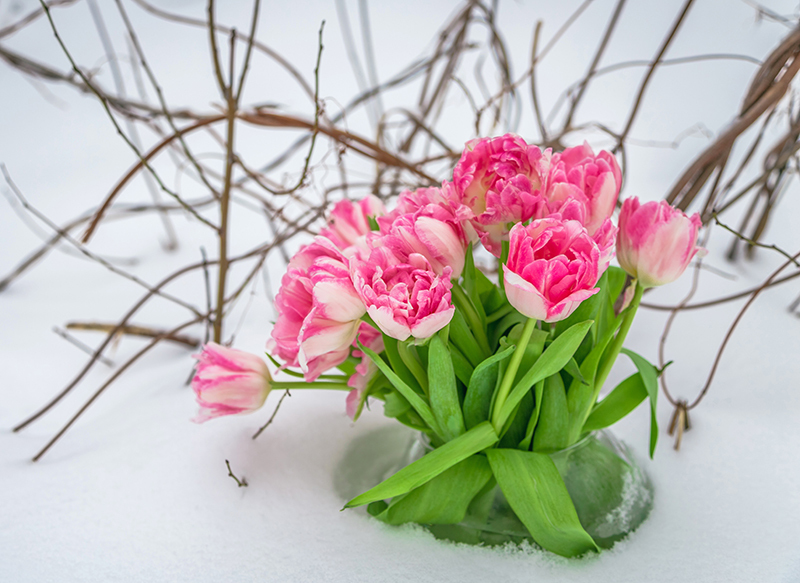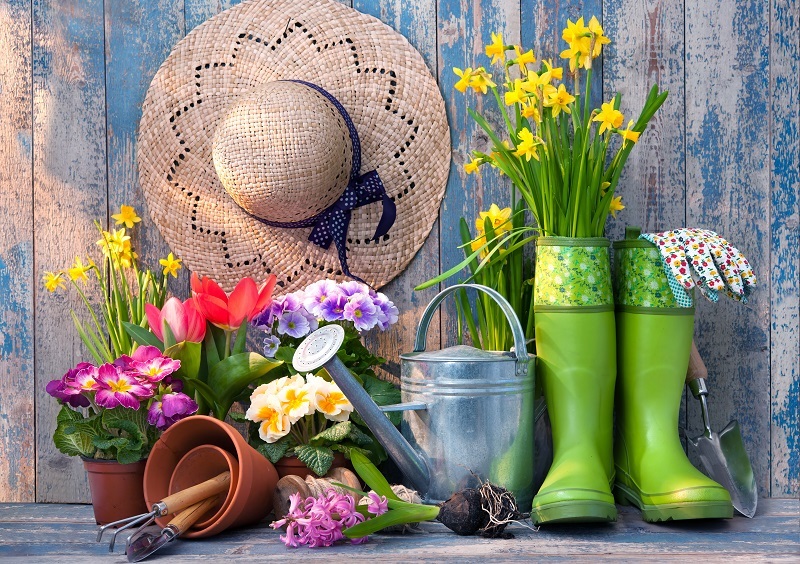Nurturing Cut Flowers: Essential Care Tips
Posted on 27/08/2025
Nurturing Cut Flowers: Essential Care Tips
Choosing and caring for cut flowers can bring life, color, and fragrance into any space. But keeping fresh-cut flowers looking their best isn't just about placing them in a vase with water and hoping for the best. With the right knowledge and care techniques, you can significantly extend their beauty and vibrancy. In this comprehensive guide, we'll explore effective cut flower care tips, from preparation to maintenance, so you can enjoy gorgeous blooms for days--if not weeks--longer.
Why Proper Cut Flower Care Matters
The moment flowers are snipped from their plant, they start a natural process of degeneration. Nourishing these blooms in the right way helps slow down wilting, maintains color intensity, and retains the freshness that makes cut flowers so appealing. Whether you're caring for a bouquet from a florist, a home garden arrangement, or store-bought stems, the right nurturing practices are essential to keep them beautiful and thriving.

Choosing Fresh Cut Flowers: The First Step to Longevity
To maximize the lifespan of your flowers, begin with the freshest blooms possible. Here's how you can identify and select the best bunches:
- Check bud tightness: Choose blooms that are just starting to open for longer vase life.
- Inspect stems: Healthy, green, and firm stems indicate freshly cut flowers.
- Observe petals: Avoid flowers with brown edges, wilting, or missing petals.
- Assess fragrance: A naturally sweet scent signals freshness.
- Test leaves: Fresh, firm, and vibrant leaves are signs of cut flowers' health.
Preparation: The Key to Healthy Cut Flowers
Before arranging your bouquet, proper preparation is crucial. Follow these essential steps to give your blooms the best start:
Trim Stems at an Angle
Always cut stems at a 45-degree angle using clean, sharp scissors or pruning shears. This increases the surface area for water absorption and prevents stems from sitting flat on the vase base, which can restrict water intake.
Remove Lower Leaves
*Strip any leaves that would rest below the water line in the vase.* Submerged foliage can decay, causing bacterial growth that shortens the lifespan of fresh-cut flowers.
Condition the Blooms
For certain delicate flowers, it's helpful to condition them by soaking their stems in lukewarm water for a few hours before arranging. Roses, hydrangeas, and peonies especially benefit from this process.
Water Quality: A Crucial Factor for Vase Flowers
The water you use directly influences how long cut flowers last. Follow these water care guidelines:
- Change water every 2-3 days to prevent bacterial buildup.
- Use lukewarm water to help flowers hydrate quickly, except for bulb flowers (like tulips), which prefer cold water.
- Keep the vase clean: Wash with soapy water between water changes to eliminate residue.
- Add fresh flower food, which usually contains the right mix of nutrients and antibacterial agents.
If commercial flower food isn't available, create a homemade solution using 1 teaspoon sugar, 2 teaspoons lemon or lime juice, and a drop of bleach per quart of water. These ingredients provide carbohydrates, lower pH, and prevent bacterial growth--extending the vase life of cut flowers.
The Right Vase Makes a Difference
Don't underestimate the importance of the vase in nurturing fresh-cut bouquets. Consider the following tips:
- Cleanliness is key: Start with a thoroughly cleaned vase to inhibit the growth of harmful bacteria.
- Proper sizing: Choose a vase tall enough to support the stems but wide enough to allow air circulation.
- Water depth: Fill the vase to about two-thirds full for most flowers. Woody-stemmed plants, like lilacs, benefit from deeper water.
Sunlight, Temperature, and Placement
Where you place your bouquet has a major impact on how long you can enjoy your cut flowers at their best.
- Avoid direct sunlight as it accelerates wilting.
- Keep away from heat sources like radiators or appliances.
- Cool rooms (about 65?F or 18?C) are ideal for prolonging bloom life.
- Don't place flowers near fruit--ripening fruit emits ethylene gas, which hastens flower aging.
- Steer clear of drafts from windows or doors, which can dehydrate delicate petals.
Specific Care Tips for Popular Cut Flowers
Every flower has unique traits. Here are essential tips for some of the most popular vase flowers:
Roses
- Remove thorns and any submerged leaves.
- Re-cut stems every 2-3 days to keep water uptake efficient.
- Submerge the entire stem in water for an hour if blooms droop.
Lilies
- Remove stamens to prevent pollen stains and extend vase life.
- Trim stems every few days.
- Keep away from pets--lilies are toxic to cats.
Tulips
- Use cold water and avoid adding flower food.
- Wrap stems in paper and stand them upright in water for a few hours after cutting to keep them straight.
- Keep away from direct sunlight, as tulips grow toward light even after being cut.
Daffodils
- Let freshly cut daffodils sit in a separate container for a few hours before mixing with other flowers--they exude sap that can harm other blooms.
- Use clean, fresh water only.
Peonies
- Trim stems and remove excess leaves for better water absorption.
- Change water frequently for maximum freshness.
Top Tricks to Prolong the Life of Cut Flowers
Creative hacks can make a real difference for fresh cuts:
- Use a fine-mist spray bottle to gently mist flowers daily--particularly for roses and hydrangeas.
- Re-cut stems frequently--each new cut opens up the water channel, allowing better absorption.
- Remove wilting blooms from arrangements to prevent the spread of mold or bacteria to healthy flowers.
- Refrigerate your flowers overnight (4-7?C or 39-45?F) if possible. Florists use this trick to keep orders fresh before sale.
- Be mindful of water level--topping up regularly reduces the risk of stems drying out.
Common Mistakes to Avoid with Fresh-Cut Flowers
- Neglecting to recut stems: Old cuts seal up quickly, which prevents water uptake.
- Ignoring dirty vases: Bacterial growth sabotages your efforts at every step.
- Leaving leaves below water: Trapped debris rapidly decays and contaminates water.
- Using soft water with high salt content: Some tap water contains salts that are harmful to many popular cut flowers.
- Too much sunlight: Beauty fades faster in direct sunshine.
FAQs on Cut Flower Care
- How often should I change the water? Every 2-3 days, or sooner if it appears cloudy.
- Will aspirin or coins help extend flower life? While some swear by these home remedies, commercial flower food is more reliable.
- Should I refrigerate my cut flowers? If possible, yes--especially overnight or when you're away.
- Can I revive wilted flowers? Try trimming stems and submerging them in lukewarm water for 30-60 minutes in a cool, dark place.

Sustainable Tips for Cut Flower Enthusiasts
If you enjoy bringing home regular bouquets, embrace sustainable practices:
- Choose local and seasonal flowers to reduce environmental impact and support local growers.
- Compost spent flowers rather than sending them to landfill.
- Reuse or recycle your vases and support Eco-friendly florists who avoid floral foam and single-use plastics.
Conclusion: The Art of Nurturing Cut Flowers
Ready to transform your flower arrangements into long-lasting masterpieces? Use these essential care tips and share your bouquet triumphs today!
Latest Posts
Nurturing Cut Flowers: Essential Care Tips
Top Picks: Birthday Flowers That Brighten Any Day
Exploring the Symbolism and Color Meanings of Peony Flowers





